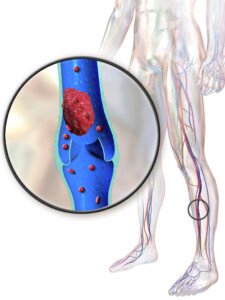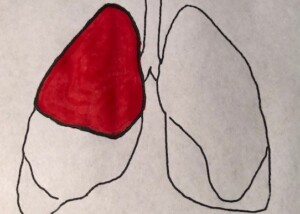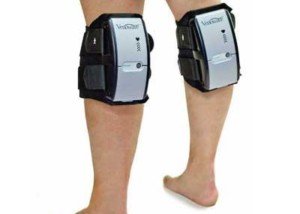The length of time that DVT risk remains significant after joint replacement surgery will shock you.
It’s years. Yes, the risk of this dangerous blood clot goes on for years after the joint replacement.
This is the result of a study, led by Yuqing Zhang, D.Sc., Professor of Medicine and Epidemiology at Boston University School of Medicine, that was published in Arthritis & Rheumatology.
Risk of DVT is high in the first month following joint replacement surgery (knee or hip), but this risk persists for a long time out—years, say the researchers.
“The long-term risk of heart attack was insignificant,” says Dr. Zhang in the 2015 paper, “but risk of blood clots in the lung remained for years after surgery to replace a hip or knee damaged by osteoarthritis.”
A blood clot in the lung is called a pulmonary embolism, and this originates from a DVT (deep vein thrombosis) in the leg when a portion of it breaks off and travels to the lung.
The results of Zhang’s study means that long after your surgeon has taken you off the blood thinners to prevent a DVT, you must still be alert to symptoms that could mean this kind of blood clot.
Why aren’t joint replacement patients on blood thinners for much longer if DVT risk persists for years?
“Anticoagulants raise the risk of bleeding, especially in the head and brain,” says Dr. Paramjit “Romi” Chopra, MD, founder of the Midwest Institute for Minimally Invasive Therapies (MIMIT), an interventional radiology and endovascular therapy practice.
“Therefore, they are not prescribed indefinitely after joint replacement surgery — with the assumption that these patients will resume their normal activity within a few weeks to months,” continues Dr. Chopra.
“Staying active, well-hydrated and maintaining an optimal weight will reduce the overall risk of DVT.”
Symptoms of a DVT are any of the following:
- Redness in the lower or upper leg
- Swelling in the lower or upper leg
- Tenderness or warmth to the reddened area
- A pain or cramp in the calf, leg or pelvic area that does not go away when you sit and rest the leg
However, half of DVTs do not produce symptoms. If some of it or all of it travels to the lung, this can produce one or more of the following symptoms:
- Difficulty breathing
- Chest pain
- Fainting or a faint feeling
Though the risk of a DVT, according to the study, stays for years after the joint replacement surgery, you now know why your surgeon will not want you on a prescription blood thinner for those years.











































